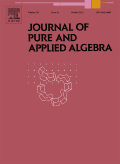
JOURNAL OF PURE AND APPLIED ALGEBRA
Scope & Guideline
Elevating Mathematical Discourse in Pure and Applied Algebra
Introduction
Aims and Scopes
- Algebraic Structures:
The journal publishes research on various algebraic structures such as groups, rings, fields, and algebras, exploring their properties, classifications, and interrelations. - Homological Algebra:
Research on homological techniques, derived categories, and their applications in algebraic geometry and representation theory is a core theme. - Representation Theory:
The journal includes studies on the representation theory of algebras, groups, and categories, focusing on both finite and infinite-dimensional representations. - Algebraic Geometry:
Papers often touch on algebraic geometry topics, particularly those that intersect with algebraic structures, such as schemes and varieties. - Applications of Algebra:
The journal highlights the applications of algebraic concepts in other fields, including number theory, combinatorics, and mathematical physics. - Category Theory:
Research on categorical frameworks, including homotopy theory and derived categories, is a significant focus area, reflecting the journal's commitment to foundational aspects of mathematics.
Trending and Emerging
- Noncommutative Algebra:
There is a growing interest in noncommutative algebra, with an increasing number of papers addressing topics such as quantum groups, Hopf algebras, and their applications. - Higher Category Theory:
Research in higher category theory is on the rise, with papers exploring its implications for algebraic structures and homotopy theory, indicating a shift towards more abstract and generalized frameworks. - Algebraic Topology Intersections:
The intersection of algebra with algebraic topology and homotopy theory is trending, reflecting an integrated approach to understanding algebraic structures. - Computational Algebra:
Emerging themes in computational methods within algebra are gaining attention, with researchers exploring algorithms and computational techniques related to algebraic objects. - Homotopical and Derived Methods:
The use of homotopical and derived methods in algebra is becoming more prevalent, with researchers investigating their applications in various algebraic contexts. - Applications in Mathematical Physics:
There is a notable increase in papers that explore the applications of algebraic theories in mathematical physics, particularly in areas like quantum algebra and representation theory.
Declining or Waning
- Classical Group Theory:
While still relevant, classical group theory topics have seen a decrease in publication frequency, possibly due to the rise of more abstract frameworks and computational methods in algebra. - Elementary Number Theory:
Papers focusing solely on elementary number theory aspects have diminished, as the journal increasingly prioritizes research that integrates algebra with other mathematical disciplines. - Traditional Algebraic Geometry:
Research centered on traditional aspects of algebraic geometry has waned, likely as more complex and abstract algebraic concepts gain traction. - Real Analysis Applications:
The application of algebraic concepts to real analysis is less frequently explored in recent publications, indicating a shift towards more abstract algebraic theories.
Similar Journals

ALGEBRA UNIVERSALIS
Pioneering Research in Algebra and BeyondALGEBRA UNIVERSALIS is a prestigious academic journal published by Springer Basel AG, dedicated to the exploration and advancement of mathematical research, particularly within the realms of algebra, number theory, and logic. Established in 1971, this journal continues to provide a platform for innovative research and discourse, contributing significantly to its fields of study over more than five decades. With its current classification in the Q2 quartile for both Algebra and Number Theory and Logic, ALGEBRA UNIVERSALIS ranks prominently within the mathematical community. Although it is not an open-access journal, it offers numerous subscription options for individuals and institutions seeking to stay current with the latest developments and findings. The journal’s commitment to quality research makes it an essential resource for researchers, professionals, and students aiming to deepen their understanding and knowledge of advanced mathematical theories and methodologies.
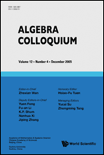
ALGEBRA COLLOQUIUM
Exploring the Depths of Algebra and Number TheoryALGEBRA COLLOQUIUM is a prominent journal dedicated to advancing the field of mathematics, specifically focusing on Algebra and Number Theory as well as Applied Mathematics. Published by World Scientific Publishing Co Pte Ltd, this journal is based in Singapore and has been a cornerstone in mathematical research since its inception in 1996, with an anticipated convergence through 2024. With an ISSN of 1005-3867 and E-ISSN of 0219-1733, it features rigorous peer-reviewed papers that cover a diverse range of topics within its scope. Reflecting its quality, Algebra Colloquium is ranked in the Q3 quartile in both Algebra and Number Theory as well as Applied Mathematics, indicating its significance amidst a competitive publication landscape. Researchers, professionals, and students looking to stay at the forefront of mathematical innovation will find a wealth of knowledge and research insights within these pages, making it an essential resource for anyone committed to deepening their understanding of algebraic concepts and techniques.

SIAM Journal on Applied Algebra and Geometry
Elevating Understanding through Rigorous Mathematical InquirySIAM Journal on Applied Algebra and Geometry, published by SIAM Publications, is a premier academic journal that occupies a vital space in the fields of Algebra, Geometry, and Applied Mathematics. With an impressive impact factor reflected in its Q1 category rankings in 2023 across key mathematical disciplines such as Algebra and Number Theory, as well as Geometry and Topology, this journal is positioned among the highest echelons of mathematical research. Since its inception in 2017, it has become a crucial source for advanced studies and applied techniques that harness algebraic and geometric methods, catering to both theoretical insights and practical applications. Researchers, professionals, and students alike benefit from its rigorous peer-reviewed articles that explore contemporary challenges and developments in mathematics. While Open Access options are currently not available, the journal remains dedicated to fostering innovation and knowledge dissemination within the scientific community, thus ensuring significant contributions to the advancement of the mathematical sciences.
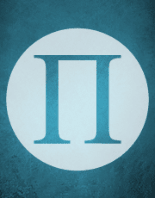
Forum of Mathematics Pi
Exploring the Depths of Mathematical InnovationForum of Mathematics Pi, published by Cambridge University Press, stands at the forefront of mathematical research, providing an open-access platform since 2013. With an ISSN of 2050-5086, this journal has rapidly established itself within the mathematical community, particularly noted for its high impact in the realms of Algebra and Number Theory, Analysis, Discrete Mathematics and Combinatorics, Geometry and Topology, Mathematical Physics, and Statistics and Probability, as evidenced by its 2023 Q1 rankings across these categories. Its placement within the top quartile signifies its importance and influence, attracting submissions from leading researchers and academicians around the globe. The journal’s diverse scope and rigorous peer-review process ensure a high standard of scholarly excellence, making it an indispensable resource for professionals, students, and researchers eager to stay informed about cutting-edge mathematical advancements. Access to its comprehensive array of articles is openly available, promoting a culture of collaboration and knowledge sharing in the mathematics community.

APPLIED CATEGORICAL STRUCTURES
Elevating Understanding in Applied Categorical StructuresApplied Categorical Structures is a prominent journal published by Springer, dedicated to the dissemination of high-quality research in the intersecting domains of algebra, number theory, and theoretical computer science. Since its inception in 1993, this journal has fostered academic discussion and innovation, contributing significantly to the advancement of categorical methodologies in these fields. With an impressive 2023 Q2 ranking in both Algebra and Number Theory, and Computer Science categories, it reflects a strong standing in the scientific community, positioning itself as a valuable resource for scholars. The absence of an Open Access model allows for a traditional subscription-based distribution, providing readers with curated, peer-reviewed articles that ensure academic integrity. Aspiring authors and researchers are encouraged to publish their work here, where their contributions will resonate across a vibrant network of professionals prioritizing cutting-edge development in categorical theory and its applications.

Journal of Homotopy and Related Structures
Charting New Territories in Mathematical RelationshipsJournal of Homotopy and Related Structures is a distinguished academic journal published by Springer Heidelberg, specializing in the fields of algebra, number theory, geometry, and topology. With a focus on the intricate relationships and structures within these disciplines, the journal aims to facilitate the dissemination of original research and provide a platform for scholarly exchange among mathematicians. Since its inception in 2012, the journal has positioned itself in the Q2 category for both Algebra and Number Theory and Geometry and Topology in 2023, reflecting its growing influence and commitment to high-quality publications. Although it operates under a subscription model, the research published in this journal is highly cited, contributing to its notable rankings—#57 in Geometry and Topology and #65 in Algebra and Number Theory on the Scopus index. This journal is an essential resource for researchers, professionals, and students who wish to stay updated with the latest advancements and trends in homotopy theory and related mathematical structures.

JOURNAL OF THE AMERICAN MATHEMATICAL SOCIETY
Showcasing Excellence in Theoretical and Applied MathThe Journal of the American Mathematical Society (ISSN: 0894-0347; E-ISSN: 1088-6834), published by the American Mathematical Society, stands as a pillar in the fields of mathematics and applied mathematics. This prestigious journal, with a remarkable impact factor and ranking in the top tier (*Q1*) within both the Applied Mathematics and general Mathematics categories, is recognized for its contribution to advancing mathematical research and theory. With data reflecting it as the 8th ranked journal in General Mathematics (top 2%) and the 34th in Applied Mathematics (top 6%), the journal consistently showcases groundbreaking studies and innovative methods that greatly influence academia and industry alike. Though not an open-access journal, it offers a wealth of resources and intellectual discourse for researchers, professionals, and students alike. Specializing in comprehensive and theoretical aspects of mathematics, the Journal remains dedicated to publishing articles that promote understanding and propel the field forward, highlighting its significance as an essential tool for those engaged in mathematical research.
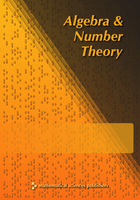
Algebra & Number Theory
Pioneering Research in Algebra and Number TheoryAlgebra & Number Theory, published by Mathematical Science Publications, stands at the forefront of mathematical research, particularly in the fields of algebra and number theory. With an ISSN of 1937-0652 and E-ISSN 1944-7833, this esteemed journal provides a dedicated platform for the dissemination of cutting-edge theoretical advances and practical applications. It has achieved a Q1 category ranking in both algebra and number theory according to the 2023 quartiles, reinforcing its critical role in shaping contemporary mathematical discourse. The journal serves as an essential resource for researchers, professionals, and students alike, offering insights into diverse mathematical methodologies and fostering open dialogue among scholars. Although it does not provide open access, its robust impact factor reflects the high quality and relevance of its published work. Based in the United States at the University of California, Berkeley, the journal's commitment to excellence continues to attract contributions that push the boundaries of mathematical understanding.
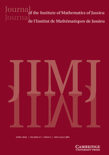
Journal of the Institute of Mathematics of Jussieu
Elevating the Standards of Mathematical ScholarshipJournal of the Institute of Mathematics of Jussieu, published by Cambridge University Press, is a leading academic journal that has established itself as a vital resource in the field of mathematics. With an impressive impact factor and a ranking in the top quartile (Q1) of miscellaneous mathematics, the journal serves as a platform for high-quality research from both established scholars and emerging researchers. Spanning from 2002 to 2024, the journal aims to foster collaboration and innovation in the mathematical community by publishing original research articles, reviews, and critical discussions on a wide range of mathematical topics. Although the journal does not offer open access, it remains widely accessible through various academic institutions and libraries, ensuring that critical advancements in mathematics are shared with a global audience. Located in the United Kingdom at the prestigious Cambridge campus, the journal reflects the rigorous standards of its publisher and the rich academic tradition of its home institution.

Cambridge Journal of Mathematics
Fostering Collaboration Through Mathematical InquiryCambridge Journal of Mathematics, published by INT PRESS BOSTON, INC, is a premier platform for the dissemination of cutting-edge research in the field of mathematics. With an ISSN of 2168-0930 and E-ISSN 2168-0949, this journal stands out in a competitive academic landscape, currently ranked #58 out of 399 in General Mathematics, placing it in the top 15% within its category according to Scopus metrics. The journal serves as a vital resource for researchers, professionals, and students alike, aiming to foster groundbreaking mathematical inquiries and foster collaboration across disciplines. Published from 2020 to 2024, the Cambridge Journal of Mathematics is committed to maintaining high standards of scholarship, making it an essential read for those who are passionate about advancing mathematical knowledge and its applications.